 2017 Hyundai i30 III Dimensions, Size & Specs
2017 Hyundai i30 III Dimensions, Size & SpecsMeasurements of the 2017 Hyundai i30 III, engineered for optimal performance and comfort
| Dimensions | |
|---|---|
| Length: | 4340 mm170.9 in14.2 ft |
| Width: | 1795 mm70.7 in5.9 ft |
| Height: | 1447-1455 mm57.0-57.3 in4.7-4.8 ft |
| Ground Clearance: | 135-140 mm5.3-5.5 in0.4-0.5 ft |
| Trunk Capacity: | 395 liter13.9 cu ft |
| Trunk Capacity (Max): | 1301 liter45.9 cu ft |
| Weight Specifications | |
| Curb Weight: | 1169-1440 kg2577-3175 lbs |
| Maximal permitted Weight: | 1760-1950 kg3880-4299 lbs |
| Tire Specifications | |
| Rims Sizes: | 15-inch rims:
|
| Tire Sizes: |
|
The Hyundai i30 III, produced between 2016 and 2018, is a well-regarded compact hatchback that balances style, practicality, and efficiency. Measuring between 4335 mm and 4340 mm in length (approximately 170.7 to 170.9 inches), the i30 III offers a comfortable width of 1795 mm (70.7 inches) and a varying height from 1447 to 1455 mm (56.9 to 57.3 inches), making it an ideal size for urban driving and maneuverability while still providing ample interior space.
Curb weight for this generation ranges from 1169 kg to 1440 kg (2577 to 3175 lbs), depending on trim and equipment, with a maximum allowable weight between 1760 and 1950 kg (3881 to 4299 lbs). This weight spread supports a solid driving experience with stability and responsive handling. The car’s ground clearance varies slightly between 135 mm and 140 mm (5.3 to 5.5 inches), striking a practical balance for everyday driving situations including moderate uneven terrain.
From a storage perspective, the Hyundai i30 III offers a generous luggage capacity of 395 liters (13.9 cubic feet) with the rear seats in place. Folding down the rear seats expands this space significantly to 1301 liters (45.9 cubic feet), catering well to families and those requiring flexible cargo solutions.
The wheel and tire options include rim sizes from 15 to 19 inches, specifically 6.0J x 15, 6.5J x 16, 7.0J x 17, up to 18 and 19 inches, paired with tire dimensions ranging from 195/65 R15 to sporty 235/35 R19 sizes. This variety allows customization based on driver preference for comfort, performance, or aesthetics.
Overall, the Hyundai i30 III (2017-2018) is a versatile hatchback suited for drivers seeking a compact yet spacious vehicle with a practical footprint, competitive weight management, and adaptable cargo space. It competes strongly within the compact hatchback segment, offering a blend of modern design, practicality, and choice.
Discover the standout features that make the 2017 Hyundai i30 III a leader in its class
Have a question? Please check our knowledgebase first.
The Hyundai i30 III, produced between 2016 and 2018, measures approximately 4335 to 4340 mm (170.7 to 170.9 inches) in length, 1795 mm (70.7 inches) in width, and has a height ranging from 1447 to 1455 mm (56.9 to 57.3 inches). These dimensions position the i30 III as a compact hatchback ideal for urban and suburban driving, delivering a balanced footprint that facilitates parking and maneuverability while preserving interior space.
The curb weight of the Hyundai i30 III varies between 1169 and 1440 kilograms (2576 to 3175 pounds), depending on specifications and trim levels. Its maximum allowed weight spans from 1760 to 1950 kilograms (3881 to 4299 pounds). This range ensures that the vehicle can accommodate passengers and cargo efficiently without compromising performance or safety, reflecting a typical weight profile for a compact hatchback of its class.
The standard luggage capacity of the Hyundai i30 III stands at 395 liters (approximately 13.9 cubic feet) with the rear seats upright. When the rear seats are folded down, cargo space expands significantly to 1301 liters (about 45.9 cubic feet). This flexibility allows the i30 III to adapt to varying cargo needs, from everyday errands to accommodating larger items when required, making it versatile for both daily use and longer trips.
The Hyundai i30 III offers a ride height or ground clearance between 135 and 140 millimeters (5.31 to 5.51 inches). This clearance is sufficient for typical road conditions, providing a comfortable balance between ease of entry, aerodynamic efficiency, and capability to handle minor road irregularities. While not designed for off-road use, the moderate ground clearance suits urban environments and smooth highways, ensuring stable and predictable handling.
The Hyundai i30 III supports a variety of rim sizes including 15-inch (6.0J x 15), 16-inch (6.5J x 16), 17-inch (7.0J x 17), 18-inch, and 19-inch wheels. Corresponding tire sizes range from 195/65 R15, 205/55 R16, 225/45 R17, 225/40 R18 to 235/35 R19. Larger rims and tires typically offer enhanced handling and a sportier aesthetic but may slightly reduce ride comfort and fuel efficiency compared to smaller wheels, which prioritize comfort and better fuel economy.
Yes, the Hyundai i30 III fits comfortably into a standard garage. With its maximum length close to 4340 mm (170.9 inches) and width of 1795 mm (70.7 inches), it occupies less space than many larger family vehicles and SUVs. A standard single garage is typically about 2400 to 3000 mm wide and 4800 to 6000 mm deep, ample space for the i30 III with room to maneuver around. This makes it a practical choice for owners with typical home garages or parking spaces.
Compared to the second generation Hyundai i30 II, the i30 III shows subtle dimensional changes. The i30 III generally maintains a similar footprint with slight increases in length (around 4335-4340 mm vs. approximately 4300-4350 mm for the i30 II), roughly identical width (~1795 mm), and a slight variation in height (1447-1455 mm as opposed to around 1450 mm). These modest adjustments resulted in improved aerodynamics and interior space utilization, enhancing comfort without sacrificing agility or parking ease.
The Hyundai i30 III stands competitively among compact hatchbacks such as the Volkswagen Golf, Ford Focus, and Mazda3. Its length around 4335 mm (170.7 inches) is similar to these rivals, offering balanced interior space and manageable external dimensions. The luggage capacity of 395 liters is comparable, although some competitors may offer slightly larger or smaller cargo holds. Overall, the i30 III delivers a well-rounded package with competitive sizing, making it a versatile choice in the highly contested compact hatchback market.
The Hyundai i30 III is designed with passenger comfort in mind, featuring an ergonomic layout and sufficient headroom and legroom for front and rear occupants. Its interior dimensions accommodate four to five passengers comfortably, supported by high-quality materials and thoughtful design touches. The hatchback form factor allows for flexible cargo and passenger configurations, while options such as adjustable seating, climate control, and infotainment enhance overall ride experience. The vehicle's compact external size does not compromise on interior spaciousness, striking a good balance for small families or commuters.
The curb weight of the Hyundai i30 III ranges between 1169 and 1440 kilograms (2576 to 3175 pounds) depending primarily on the trim level, engine choice, and optional equipment. For example, higher-spec trims with additional safety features, larger wheels, and infotainment upgrades tend to increase the weight. Similarly, diesel or turbocharged engine variants may differ slightly due to heavier components. This variability impacts fuel consumption, handling dynamics, and performance, allowing buyers to prioritize either efficiency or added features according to their preferences.
Discover similar sized cars.

| Production: | 2015-2020 |
|---|---|
| Model Year: | 2017 |
| Length: | 4351 mm171.3 in |
| Width: | 1798 mm70.8 in |
| Height: | 1465 mm57.7 in |

| Production: | 2010-2016 |
|---|---|
| Model Year: | 2011 |
| Length: | 4351 mm171.3 in |
| Width: | 1800 mm70.9 in |
| Height: | 1430-1465 mm56.3-57.7 in |
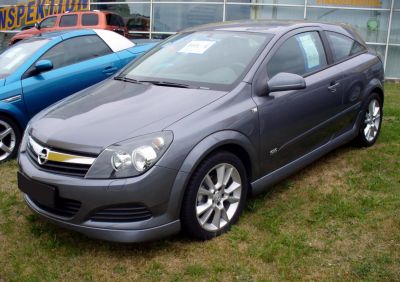
| Production: | 2005-2006 |
|---|---|
| Model Year: | 2005 |
| Length: | 4290 mm168.9 in |
| Width: | 2033 mm80.0 in |
| Height: | 1415 mm55.7 in |

| Production: | 2016-2018 |
|---|---|
| Model Year: | 2017 |
| Length: | 4350 mm171.3 in |
| Width: | 1780 mm70.1 in |
| Height: | 1450 mm57.1 in |
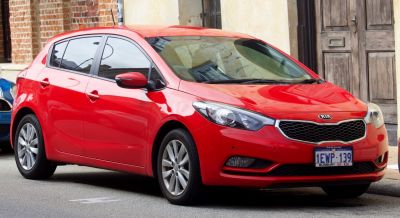
| Production: | 2012-2016 |
|---|---|
| Model Year: | 2013 |
| Length: | 4350 mm171.3 in |
| Width: | 1780 mm70.1 in |
| Height: | 1450 mm57.1 in |
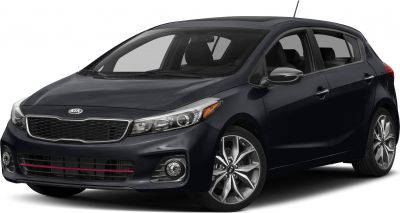
| Production: | 2017-2018 |
|---|---|
| Model Year: | 2017 |
| Length: | 4350 mm171.3 in |
| Width: | 1780 mm70.1 in |
| Height: | 1450 mm57.1 in |
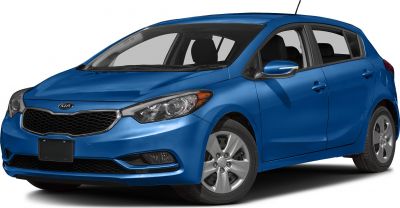
| Production: | 2013-2016 |
|---|---|
| Model Year: | 2014 |
| Length: | 4350 mm171.3 in |
| Width: | 1780 mm70.1 in |
| Height: | 1450 mm57.1 in |
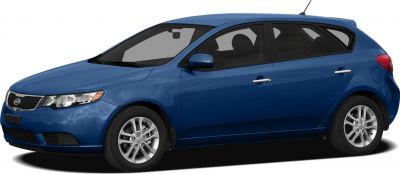
| Production: | 2010-2013 |
|---|---|
| Model Year: | 2011 |
| Length: | 4340 mm170.9 in |
| Width: | 1775 mm69.9 in |
| Height: | 1460 mm57.5 in |
